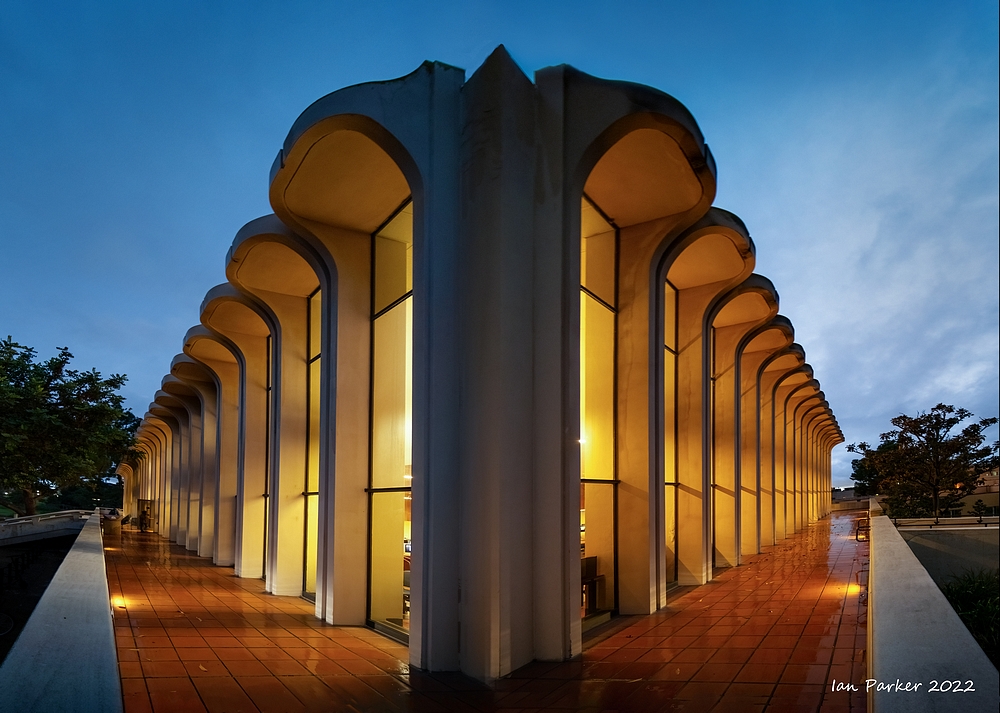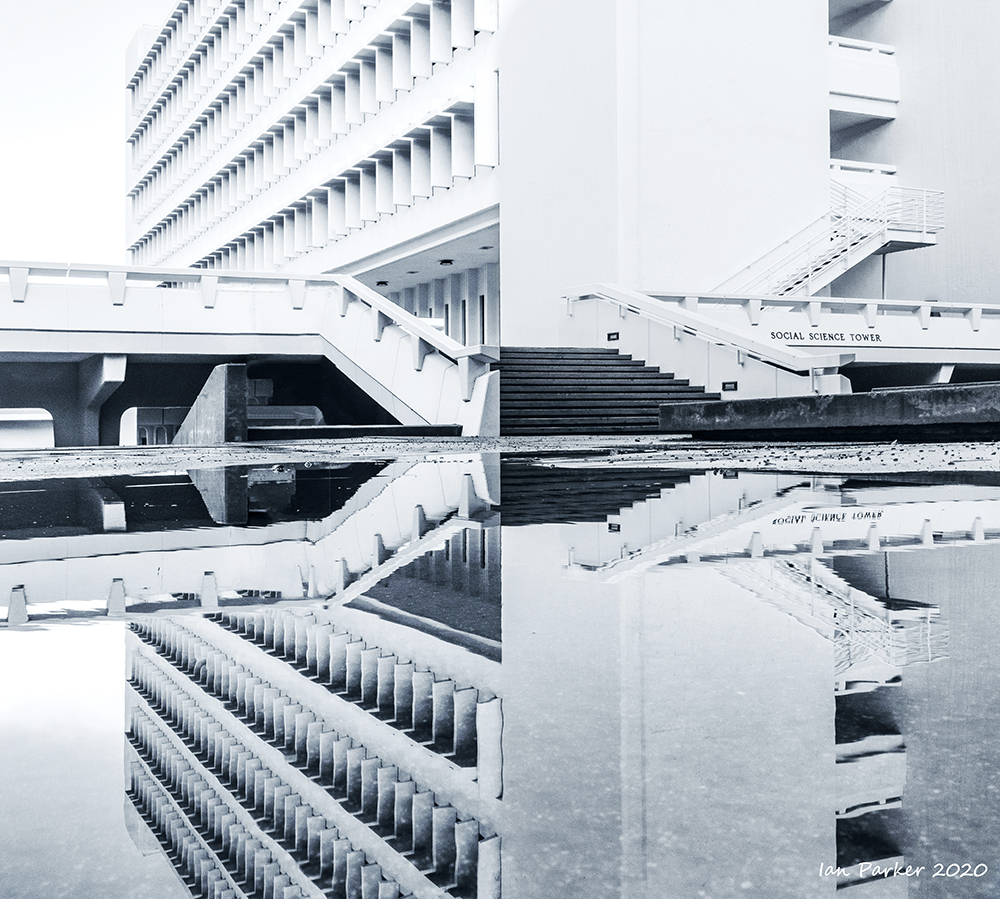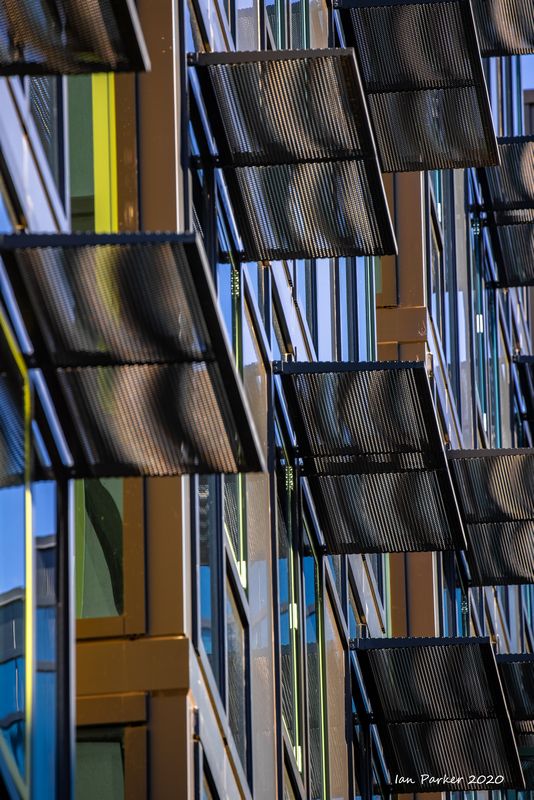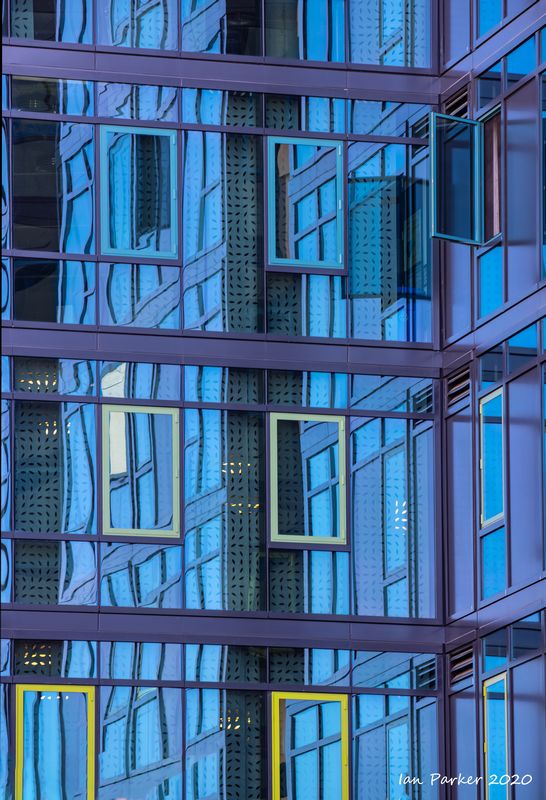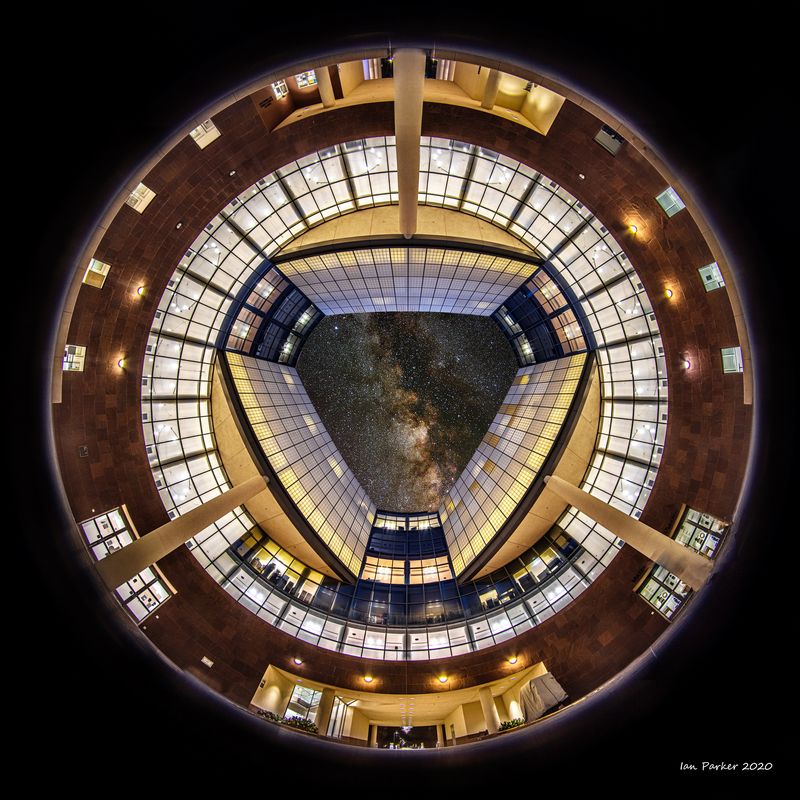|
For faster browsing, click on the underlined text legend below any of the thumbnail images in the galleries. Use your browser BACK button to return you to the gallery. If you find a picture you like, you can download the image at full original resolution by clicking on the thumbnail itself. To save a downloaded image, right click on it and scroll to 'save picture as...'. To use an image as your desktop background, right click and scroll to 'set as background...'. |
|
EditRegion3
FEATURED IMAGES OF UCI
|
|
Gateway Commons (now renamed the GatewayStudy Center), University of California, Irvine My subject in this photo features a building designed by the renowned architect William Pereira, one of the original buildings on the UCI campus, the Gateway Commons that dates from the founding of the campus in 1965. Pereira set out a bold master plan for the new campus, envisaging floating white concrete platforms suspended over the ground on pedestals to present the buildings like individual sculptures in a giant museum sculpture garden. Each building was constructed in the 'brutalist' style, characterized by minimalist constructions that showcase the bare building materials and structural elements over decorative design, making use of exposed concrete, angular geometric shapes and a monochromatic color palette. Pereira's buildings were indeed brutalist, but functional, with fins and sunshades (‘eyebrows’) over the windows acting as passive solar elements to capture the sea breeze and keep the buildings cool without air-conditioning. By comparison with more recent architectural designs on the campus, many of Pereira’s buildings now appear rather overbearing (especially the four-story Social Science Lab which lacks ANY windows). The Gateway Commons building is a notable exception, featuring full-height windows along each facade, framed by his characteristic precast ‘eyebrows’. At night the interior lights illuminate the concrete surrounds, so the whole building appears to glow with a welcoming warmth, in marked contrast the monochrome grey of daytime. |
"Steelscape: UCI Continuing Education Building" |
During the covid-19 pandemic my day-to-day universe has shrunk to walking distance from home. However, we are fortunate to live of the campus of UCI, which has given me many new photographic subject and ideas. The campus is new – founded only in 1965 – so the architecture cannot rival that of old institutions such as Cambridge. Nevertheless, there is much to be found. The original campus buildings were constructed in a uniform ‘brutalist’ style; a description that has a specific meaning in architecture, but does well describe them in an everyday sense of the word (scroll down to P-o-t-M #148). After about 1975 however, that uniformity was abandoned, and subsequent buildings display more individuality, and sometimes a little quirkiness. The courtyard is indeed an impressive and inviting space, with the massive overhead brise-soleil grid forming a porous roof to give a semi-enclosed, indoor/outdoor feel. To capture a photograph encompassing this vast space I was going to need a super-wide lens, and a viewpoint from one corner. Moreover, I would need to be at half-height, to keep the cameral level while including both the ground and the roof grid within the frame. A staircase leading up from the outer edge of the courtyard looked as if it would get me exactly where I wanted to be. From the first floor I was too low, on the second floor still just a little low, whereas a few steps higher gave the perfect viewpoint. But, from the second floor upward, the stairway was enclosed by a stout steel wire mesh with a grid too fine to allow taking a photo between the wires. (A similar mesh encloses the staircase on the contemporary Learning Pavilion building – I don’t know the function, whether for safety reasons or merely decorative.) What to do? From the second floor I would have to tilt the camera so much the perspective would be distorted beyond the capability of Photoshop to correct. Well, the wire mesh was structured in vertical sheets, with a gap of only an inch between. That was too narrow to photograph through, but by pushing and pulling on adjacent sheets I could enlarge the gap just enough to insert through the (narrow) 9mm lens on my little Canon M5 camera. Once situated the lens was jammed in place by the taught wires. No need for a tripod! But leveling the camera rotated the focus ring, so it took a few goes to get everything set up with the composition framed and focused correctly. As a serendipitous bonus from this unconventional arrangement, the camera screen showed that the extreme field of view of the lens included the edge of the wire mesh. Thinking that this would provide a strong framing motif to complement the steel grid of the brise-soleil I stopped down the aperture to keep focus from the depth of the courtyard to the wire mesh only inches from the lens. |
"Quadrant Reflection: Social Science Tower, UCI" |
|
UCI Social Science Tower reflected in a rain puddle. Some of my recent photos-of-the-month (#147, 142) have featured abstract 'kalaidoscope' images, created in Photoshop by reflecting a starting image around horizontal and vertical axes to create a symmetrical quadriptych. This month I show a four-panel polyptych created not by artifice, but in-camera, as a single exposure. The subject is the Social Science tower, one of the original buildings dating from the founding of the UCI campus in 1965. The master plan for the campus was designed by the famous architech William Pereira . His was a bold plan at the time, envisaging floating white concrete platforms suspended over the ground on pedestals to present the buildings like individual sculptures in a giant museum sculpture garden. Each building was constructed in the 'brutalist' style, characterized by minimalist constructions that showcase the bare building materials and structural elements over decorative design; making use of exposed concrete, angular geometric shapes and a monochromatic color palette. Pereira's buildings were indeed brutalist, but functional, with fins and sunshades acting as passive solar elements to capture the sea breeze and keep the buildings cool without air-conditioning. These stark features provided a fitting location for the filming of the original Planet of the Apes! Nowadays it is impossible to visualize Pereira's buildings as they were in the 1960's, standing alone and isolated on all sides. Photographs by Ansel Adams, comissioned in 1968 to commemorate the 100th annivesary of the University of Caifornia, are our best record from that time. The campus is now a leafy arboretum, with innumerable trees and new buildings blocking the sightlines. However, this view of the Social Science tower remains exactly as it would have looked in 1965: I Photoshopped out only a couple of modern signs. During the covid pandemic, with international and even domestic travel curtailed, my home campus of UCI became my main photographic interest. I took many walks with a camera around my neck looking for interesting perspectives on the architecture and landscape. Occasional rainy days (this is Southern California) were a big incentive to get out and find reflecting puddles. Poor drainage in Social Science plaza reliably resulted in accumulation of a particularly big puddle, creating a wonderfully large and still mirror to create symmetrically reflected images by positioning the camera just above (but not immersed in!) the water. For this month's photo I saw the opportunity to go beyond merely a reflected diptych and create a four-panel image by carefullyaligning the edge of the conctete stairs with a prominent edge on the tower. The result is not horizontally symmetrical, but makes a nice left-right textural contrast between Pereira's characteristic 'eyebrow' windows and the blank wall on the opposite face of the building. Looked at more as an abstract depiction than an objective representation the image has, to me, something of an Escher feel. |
"LA sunrise reflections from the Ecological Preserve" |
|
View of downtown LA skyscrapers from UCI
|
"Middle Earth Windows Kaleidoscope" |
"Science Library fisheye with Milky Way" |
|
Science Library, UCI Trapped at home in self-imposed covid-19 lockdown I have given myself a photographic project. We live on the Irvine campus of the University of California (UCI), and I am setting out to make a comprehensive architectural photo shoot of the campus buildings. UCI was founded just over 50 years ago, so all the buildings are relatively modern, but there is a wide range of styles from Pereira’s ‘brutalist’ original buildings to more recent post-modern extravaganzas. Perhaps the most interesting and unique building on campus is the Science Library: designed by the renowned British architect James Stirling this was completed in 1994, and its shape is reputed to have been inspired by the Starship Enterprise. Whether that is true or not, the building does have a curious layout, comprising an entryway between two tower blocks, a central, circular ‘drum’ around an open courtyard, and a terminal ‘bar’. |
| IanParker 1146 McGaugh Hall University of California, Irvine, CA 92697 |
Please send enquiries to |
BACK TO > |

